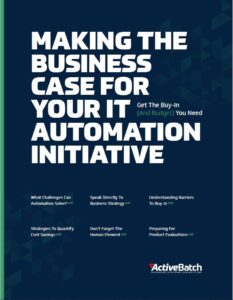Data Center Transformation: Connecting Legacy With Cloud

Legacy data centers are running low on compute as organizations become more data driven, leading to bottlenecks and delays that slow business growth. Many of these data centers were not designed to support evolving digital demands — scalability, flexibility and extensibility are new challenges for legacy IT infrastructure.
The need for more capabilities has pushed organizations into cloud-based infrastructure, whether via a public cloud, private cloud or colocation. But not all workloads are moving to the cloud. Critical business processes and sensitive data are remaining on-premises as organizations seek to reduce risk and cybersecurity concerns.
The challenge for IT leaders is how to manage workloads across hybrid cloud platforms. If a data center can’t be retired, how can IT transform existing data center infrastructure to meet complex, dynamic business needs?
Gartner expects that, by 2025, 85% of enterprise infrastructure strategies will require the integration of “on-premises, colocation, cloud and edge delivery options,” up from only 20% in 2020.
Legacy data centers will need to handle greater volumes of data while seamlessly managing workloads across disparate, distributed environments.
Most data centers are refreshed every three to five years, offering IT operations leaders an opportunity: instead of a simple refresh, legacy data centers must undergo their own digital transformation. Whereas the goal of a refresh is often to reduce operational costs, the goal of a data center transformation is to drive digital business outcomes.
Like most refreshes, a data center transformation has two methodologies: physical infrastructure and software.
Get the buy-in and budget you need for your IT automation initiative
Read five strategies that will help you build a business case for your IT automation goals.
Revamping Data Center Layouts
Physical space is a main limitation for data centers, with power and cooling requirements restricting operational capacity. New technologies can improve a data center’s performance while maximizing space utilization and reducing energy requirements. This can give the data center greater bandwidth to store data and run workloads.
For example, replacing existing hardware with self-contained racks can help optimize space utilization. Self-contained racks include their own cooling mechanisms to support higher densities within the data center, providing greater bandwidth without increasing space.
Working with self-contained racks gives IT greater flexibility in redesigning the data center. After the first rack is installed, workloads from existing racks can be consolidated into the newer rack, freeing up space for IT to install additional self-contained racks.
Next-generation technologies such as immersive cooling can enable IT to further increase server density.
The goal is to optimize capacity, without increasing operating costs, so that the data center can support evolving business needs. Physical hardware will play a key role in data center transformations, but hardware isn’t the only strategy for IT.
Data Center Optimization Through Workload Automation
Legacy data centers will need to incorporate infrastructure from a variety of sources and locations — private cloud, public cloud, colocation, hosted service providers and more. Data centers will need to manage workloads across hybrid and multi-cloud environments, relying on a high degree of automation and orchestration to scale and deliver resources and data to the right places at the right times.
In a recent survey from Vanson Bourne, 68% of CIOs reported that cloud complexity had surpassed human ability to manage.
Workload automation platforms enable IT to manage workloads without human intervention. This market has been rapidly diversifying however as vendors develop new capabilities. This includes the ability to deploy schedulers and execution servers in cloud-based environments, or connecting directly to IaaS and PaaS solutions and other cloud services.
Extensible workload automation (WLA) platforms can offer low-code REST API adapters that enable users to reliably connect any endpoint, regardless of underlying technology. This makes it possible for IT to use WLA platforms to manage workloads across on-premises and cloud-based infrastructure.
WLA vendors often provide change management capabilities that make it easier to migrate workloads into new environments, meaning IT can steadily shift workloads into cloud-based or colocation facilities over time. Additional capabilities such as resource provisioning can leverage machine learning algorithms to intelligently manage infrastructure, optimizing data center usage to reign-in operating costs.
By implementing an extensible WLA platform, IT teams can manage workloads from a single location, simplifying data centers and enabling the consolidation of complex processes.
When researching WLA platforms, look for vendors that provide additional services that can help optimize your data center, as well as product roadmaps that will help keep your data center prepared for future growth.
Data center modernization is key for IT teams that require greater control over workload placement. But in order to meet business objectives, IT will need cost effective solutions that support cloud strategies and dynamic data center services. This will require new hardware to optimize floor space as well as new solutions that make it easy to manage disparate, distributed environments.
Ready to simplify your data warehousing with workload automation?
Schedule a demo to watch our experts run jobs that match your business requirements in ActiveBatch. Get your questions answered and learn how easy it is to build and maintain your jobs.








